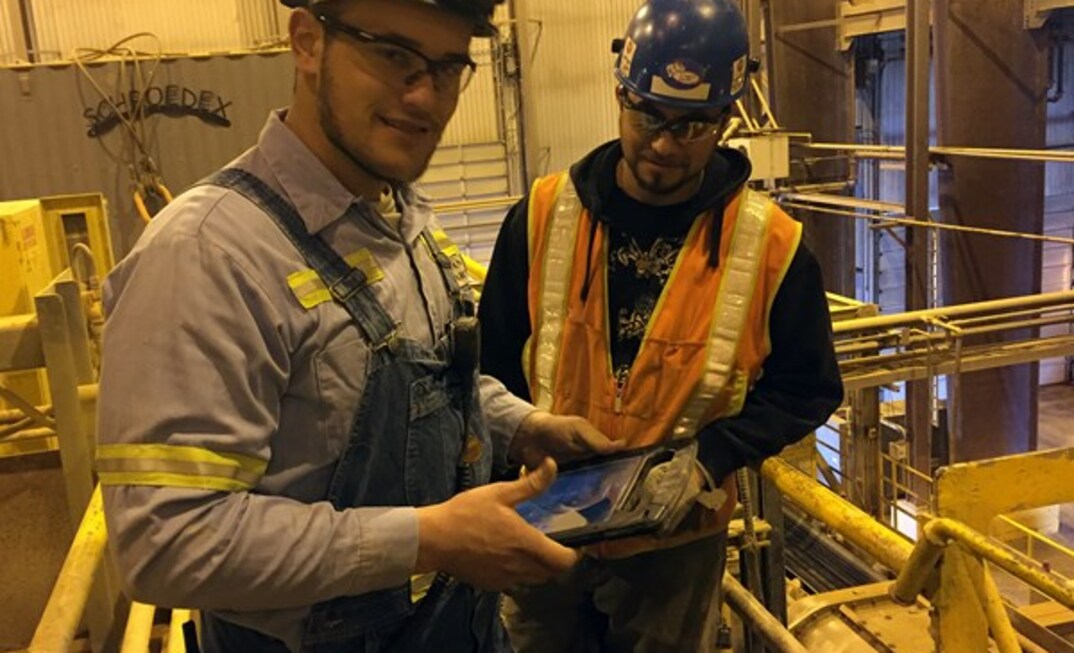Using the Digital Work Management tool, paperless work orders can be routed to tablets carried by maintenance supervisors and technicians—all in real-time. Users can see what work is scheduled for the day, its status, and any identified issues or delays. Technicians can also see the last time the equipment was serviced, and look-up equipment manuals and manufacturers’ websites.
Supervisors can follow the progress of maintenance tasks on both mobile and stationary equipment, and use the tool to help determine where to focus their attention—all in real-time. Eventually, supervisors will be able to easily match the right personnel to the right task by using an auto-schedule function that pinpoints technician selection based on the skill set required for a job.
The tool has also made it possible to create the first maintenance command centre for the Cortez mill, pulling together general supervisors from the operations, maintenance, and reliability groups. Constant communication between these groups has now replaced the lag that used to happen between daily status meetings. As a result, problems are identified earlier and resolved faster, allowing technicians to devote more time to completing their assigned tasks.
“The tool was a success thanks to the people in the field who adopted it and made it work,” said David Yazzie, product owner for the Digital Work Management tool.
Every year, the Cortez mine has four scheduled maintenance shutdowns. The most recent occurred in March and was the largest of the four, taking 70 hours to complete. Barrick said some supervisors were wary about introducing a new tool into such a critical shutdown, during which all equipment is taken down for maintenance to ensure proper operation over the year. However, their concerns were quickly put to rest. Maintenance supervisors were impressed that they could see which mechanics and electricians were assigned to a job, and what jobs had been done without hunting down other departments or looking up diagnostics.
“Using the tablets made it easier to keep track of jobs,” said John Cavaness, process maintenance supervisor. “I could see what my predecessor on the night shift had done and assign guys as needed without running down to the office and going through work orders. I had it all with me.”
Barrick said the Digital Maintenance tool is fairly intuitive and was designed based on feedback from its own teams. While the tool is user friendly, it occasionally drops the Wi-Fi connection needed to transmit data. However, the tool has the capacity to store data that is logged while it’s not connected to a network and send it once it re-connects.
Yazzie acknowledged there are a few dead spots: “The mine is huge, and it’s not cost-effective to put Wi-Fi everywhere, or provide cellular coverage for the 300 devices we’re starting with in maintenance. We’re looking into that, as well as concerns about storage and charging.”
The tool is expected to bring greater visibility to maintenance trends through the creation of quick charts—graphics that are compiled at the tap of a button to display critical data—providing more accurate information on daily progress at shift handovers, and a breakdown of the types of issues that the maintenance department is confronted with. Yazzie foresees this reducing unplanned maintenance, as it will help to more easily flag hidden trends and trouble spots, by triggering software alerts through the tablet to notify supervisors of any task issues.
“The Digital Work Management tool is a living project, and we’ll keep building in additional functions to make life easier,” he said.
























